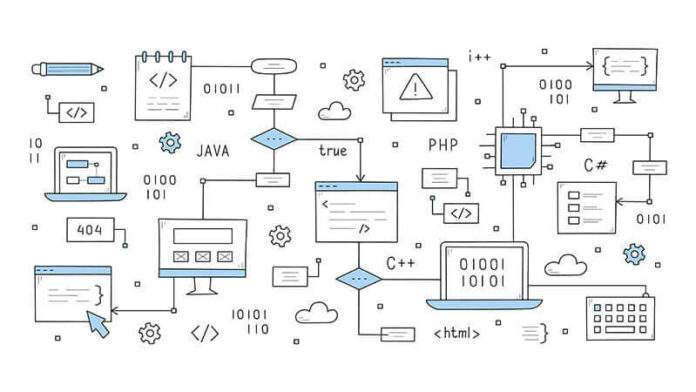An API (or programming interface) is a standard process that allows data to be shared between applications or programs. An API is an ensemble of guidelines and rules that regulate how data communications take place between clients, servers and other programs. APIs need to be able to identify what data is being shared. They also have requirements for authentication and encryption. how to It is yours to share.
It is possible to use APIs to enable users to login to a site using the credentials that they already have on websites like Facebook or Google. When payment information is transmitted using third party applications like PayPal, it’s called Third-Party Payments. These APIs enable data collection from an external program to make it easier to login to online payments or submit them.
APIs make it easier to shop online. These APIs make it easy to integrate businesses with organisations and allow them to communicate easily. Developers can create new ways to modify and update APIs. APIs combine information from multiple sources into one place, which makes it easier for users to find the data they need. Over the past year, APIs have increased in number by 221%. APIs can be hacked because they are practical and necessary. This is what same article that detailed the Salt Labs research report with recent API security trends, describes APIs as “the on-ramps to the digital world”.
API Security: What are the Biggest Threats?
Cybercriminals exploit the huge attack surface by increasing API traffic. The API traffic has increased 321% over the past twelve months. But, the API attack traffic has grown by 681 percent. API development happens quickly, so the landscape has rapidly changed. API security As the internet is constantly changing, it can be difficult to keep up with security procedures. API attacks can prove difficult to prevent because every attack is unique and involves probing for vulnerability.
API security is most at risk when an attacker tries to break object-level authorization. A hacker could modify the API object without informing the server. BOLA flaws cannot be detected by static or dynamic testing. These flaws allow criminal actors to alter or delete sensitive data. To prevent BOLA attacks, a security system should be able to detect abnormal API behavior.
Another common attack is the breaking of user authentication. When attackers take advantage of weak security features in user authentication, this is a common type of API attack. Hackers have various ways to gain access to the victim’s user accounts as well as transaction data, such credential stuffing and credential cracking.
An attacker can often access too much information through API attacks. Many APIs can provide more information than is necessary to complete the task of sharing or obtaining data. This data can be used to gain sensitive information by an attacker. Even though many APIs let clients filter data and make their own decisions, attacks can still be made on the API’s redundant information.
Cybercriminals can learn information about APIs and program components to create attacks. A security setting in an API isn’t properly defined or has default settings, making it susceptible to hackers searching for both infrastructure and data. API security problems can be difficult to spot and fix. API attacks usually succeed because they exploit weaknesses in business logic.
API Security Best practices
APIs can be difficult to secure. It is not possible to guarantee that they will be protected against hackers. These practices will make your API more vulnerable to hackers if you follow them. You can increase API security through the incorporation of these practices into development, testing, and production.
It is essential to secure API design and development. It ensures APIs are built using secure code and configuration processes. This is a great idea right from the beginning. Business logic is also an excellent idea for design reviews. This increases the likelihood of flaws being discovered early. Although security testing is capable of identifying vulnerabilities in APIs and misconfigurations, business logic issues can be detected with analysis and fuzz.
API security is dependent on the documentation of APIs. This allows internal security staff and others to understand and see the API structure, as well as how it was tested and protected. It also allows them to identify possible attack points for any API they’re using. Accurate documentation is crucial to ensure problems and solutions are easily traced.
You can use many tools to maintain API security even after you have completed development or testing. Monitoring and logging APIs can help you monitor the normal behavior of APIs and spot unusual events so they can be fixed. To determine when APIs are changing, automatic systems will compare API behavior with documentation. This allows documentation to automatically be updated. To make APIs safer, API gateways can be encrypted. Identity store, key management, and public key infrastructure are all possible. Bad actors cannot get authorization, authentication.
Although APIs play an essential role in the operations of many applications, API security is not the same as security for applications. It is essential to understand the security issues that APIs present and how you can address them. API security does not require you to be proficient in every area or step of API development. Many people overlook it. Every stage of an application should be able to understand API defenses and attacks. They also need documentation on what they can do to help protect their APIs.
Information on the Author PJ Bradley, a passionate writer on a variety of subjects and deeply committed to helping others is a prime example. Holding a bachelor’s degree from Oakland University, PJ enjoys using a lifelong desire to understand how things work to write about subjects that inspire interest. Most of PJ’s free Two of the most time-consuming tasks are writing and reading. PJ writes also regularly at Bora.
Editor’s Note: Tripwire, Inc. cannot be held responsible for guest author’s opinions.





